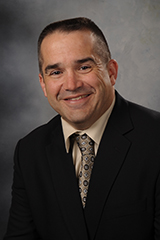January 15, 2019
On Budget Matters…

This week I am informing you about a budget matter. No, this isn’t about whether our budget is going up or down. This issue regards how our budget will be processed and distributed in the future. I apologize in advance for this article will be a little long.
To get started, let’s remind ourselves of the composition of our Cooperative Extension system budget. For our current fiscal year of 2019, our budget is $61,000,000. This includes all appropriations from federal (9% of our total Extension budget), state (30%), local (34%), and main campus (3%), as well as all of the grants, contracts and other funds (24%). The main campus appropriation was allocated in the past few years to offset the state appropriation decreases to Cooperative Extension. The main campus appropriation is a combination of tuition income and funds the legislature allocates to the Kansas State University campuses.
With the exception of Cooperative Extension and the Agricultural Experiment Station, the method by which the rest of Kansas State University colleges and units has historically received income was via tradition and negotiation. If colleges did well recruiting students, they did not receive increases in their main campus appropriation. If their enrollment went down, their main campus appropriations did not go down.
If there was a budget cut, the primary method was to make across the board cuts. University expenses for such things like facility services and utilities were mainly handled centrally. Thus, if a unit found a way to cut expenses for centrally provided services, they may not have been directly rewarded for those savings.
Kansas State University is in the process of switching to a budget model referred to as a Responsibility Centered Management (RCM) model for allocating its budget. The RCM is more of a business model for allocating funds. There are two types of accounting organizations in this model: revenue centers and service centers. Revenue centers are units that are directly involved in providing at least one of the three Land Grant university mission areas: teaching, research, and/or extension. Thus, both the extension side and research side of K-State Research and Extension qualifies as a revenue center. Examples of service centers include facility services, utilities, and information technology among others.
Revenue centers will receive revenue from their mission activities. The colleges will receive 75 percent of the tuition it generates. Twenty five percent of that tuition will go to a strategic investment pool. I will provide more information about this pool later in the article. Service centers will then bill each revenue center for the service provided to each revenue center.
Cooperative Extension “revenue” includes its federal, state, and local appropriations as well as its grants, contracts, and other funds. We will not be contributing a percentage of our “revenue” to the strategic investment pool, although we will be able to benefit from that pool.
This year the budget was allocated in our traditional fashion; however, a pretend or ghost RCM budget was implemented and is being monitored to determine how all of the revenue and service centers will perform under the RCM budget model. It is expected that all revenue centers will not break even initially. Running the ghost RCM budget will help to determine the level of subvention needed for all colleges and units. Subvention can be described as the additional funding a college or unit needs to break even.
The strategic investment pool will initially supply the subvention funds needed to break even. As we gradually become better at managing under this new budget model, our goal is to become less dependent on subvention dollars. As our need for subvention decreases, the funds in the strategic investment pool will be made available for strategic investments. The strategic investment decision process will be made similarly to a competitive grant process. A revenue center or service center will make a proposal for an initiative requiring a strategic investment, and a committee will determine whether the initiative should receive funding.
So, what does the new budget model mean for us? Here are some questions that I have been asked about the RCM model along with my responses:
• Does this mean that Cooperative Extension will have to generate tuition?
o No. Our revenue is our federal, state, and local appropriations as well as the revenue we generate from grants, contracts, and other funds.
o To secure and grow federal, state and local funding – it further emphasizes the need for doing a great job of impact reporting and advocating on behalf of Cooperative Extension.
o It also further emphasizes the need to seek out grant funding opportunities and other methods of bringing in external funding.
• Does this mean that we are going to be actively engaged in recruiting students to enroll at Kansas State University?
o I do not believe that this changes as we move from one budget model to another.
o We have and will continue to provide information and resources about Kansas State University to those who are considering pursuing an undergraduate or graduate degree.
• Is Cooperative Extension eligible for the strategic investment funding pool?
o Yes. All revenue and service centers are eligible to submit proposals for funding from this pool.
o Nevertheless, it is likely that subvention funding will require all of the strategic investment pool funds for a few years.
• Is anybody from Cooperative Extension involved with RCM budget model decisions?
o While I was not involved with the original formulation of the RCM budget model, I was recently named to the University Budget Planning Team.
While this Tuesday Letter article is lengthy, I am sure it doesn’t address all of your concerns regarding the implementation of the RCM budget model. If you have additional questions or concerns, please email them to me at ghadley@ksu.edu.
As always, thanks for the work you do, have done, and will do in the future!